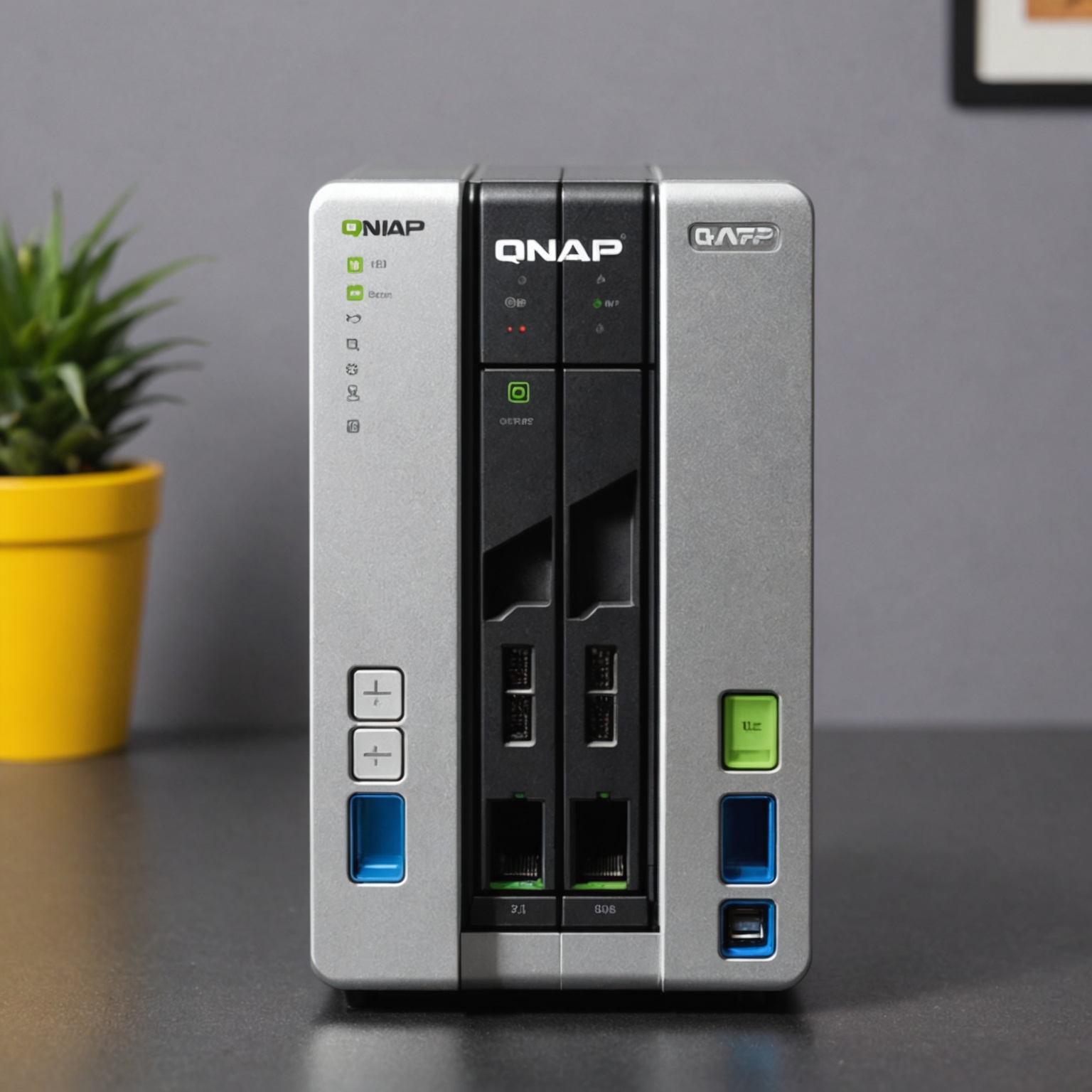In today’s digital age, data management and file sharing are critical for both businesses and individuals. A QNAP TS-231P2 NAS (Network Attached Storage) device offers a reliable and secure solution for these needs. This article will guide you through the steps to set up a secure and efficient file sharing system using your QNAP TS-231P2 NAS. By the end of this guide, you’ll have a high-performing storage system that ensures data safety and accessibility.
Understanding the QNAP TS-231P2 NAS
The QNAP TS-231P2 is a versatile NAS device designed for small offices and home users. It provides numerous features, such as RAID configurations, multiple USB ports, and file backup capabilities. This section will give you an overview of the hardware and capabilities, setting the stage for the installation and configuration process.
A lire en complément : What are the best methods for setting up a noise-cancelling environment using a Bose QC35 II for remote work?
The QNAP TS-231P2 NAS is built with a powerful Annapurna Labs AL-314 quad-core 1.7GHz processor and features 1GB or 4GB DDR3 RAM (expandable to 8GB). The RAM required for smooth operation should be considered based on your usage. With its dual Gigabit Ethernet ports, the device supports high-speed network connectivity. The dimensions and weight make it easy to incorporate into any workspace without taking up much room.
Among its key features are the RAID support for data protection, HBS Hybrid Backup Sync for comprehensive data backup and synchronization, and the Container Station for running LXC and Docker containers. The NAS device also comes equipped with QVR Elite for network surveillance and Surveillance Station for real-time monitoring.
A découvrir également : What are the steps to configure a high-performance gaming setup with an Intel Core i9-11900K and RTX 3080?
In essence, a QNAP TS-231P2 NAS combines storage, backup, and surveillance capabilities, making it a powerful tool for managing your data.
Initial Setup and Hardware Installation
Before diving into the configuration, it’s crucial to set up the hardware correctly. This section covers the installation guide, including mounting the disk drives, connecting the power supply, and initial system boot-up.
- Unpacking and Inspection: Start by unboxing the NAS. Verify that all components, such as the NAS device, disk drives, power adapter, and cables are present and undamaged.
- Installing Disk Drives: Open the NAS device by removing the front panel. Slide the hard disk drives into the designated bays. The QNAP TS-231P2 supports JBOD single, RAID 0, and RAID 1 configurations. Choose the configuration based on your preference for performance and redundancy.
- Connecting the Power Supply and Network: Attach the power adapter to the NAS and plug it into an electrical outlet. Use the provided Ethernet cables to connect the NAS to your router or switch. The QNAP TS-231P2 features dual LAN ports for link aggregation and failover support.
- Booting Up: Power on the NAS by pressing the power button. Wait for the system to initialize and boot up, which may take a few minutes.
Once the hardware setup is complete, the next step is to configure the NAS through its web interface, accessible via a connected computer.
Configuring the QNAP TS-231P2 NAS
After the initial hardware setup, it’s time to configure your NAS through the QNAP web interface. This section will guide you on creating user accounts, setting up shared folders, and enabling necessary services to facilitate efficient file sharing.
- Accessing the Web Interface: Open a web browser and enter the IP address assigned to your NAS. The QNAP Welcome page will prompt you to log in. Use the default admin credentials provided in the NAS documentation.
- Setting Up Storage: Navigate to the Storage Manager and set up your RAID configuration. RAID 1 is recommended for redundancy, whereas RAID 0 offers better performance with no data protection.
- Creating User Accounts: Go to the Control Panel and create user accounts for everyone who needs access to the NAS. Assign appropriate permissions to ensure security.
- Setting Up Shared Folders: In the Control Panel, create shared folders for organizing your files. Set access permissions for each folder to control who can read, write, or modify the contents.
- Enabling File Services: Enable SMB/CIFS for Windows, AFP for macOS, and NFS for Linux systems to allow seamless cross-platform file access. Additionally, enable Backup Sync services like HBS Hybrid Backup for automatic data synchronization.
By following these steps, your NAS will be configured to support secure and efficient file sharing across different devices and operating systems.
Implementing Security Measures
Security is paramount when dealing with sensitive data. In this section, we will discuss essential security practices, such as setting up user permissions, enabling encryption, and configuring network security features to protect your NAS.
- User Permissions and Access Control: Limit user access based on necessity. Assign only the required permissions to prevent unauthorized access. Use the Control Panel to manage these settings effectively.
- Data Encryption: Enable AES 256-bit encryption for sensitive shared folders. This ensures data remains protected even if the disk drives are removed from the NAS.
- Network Security: Configure the NAS’s firewall and enable IP blocking to prevent unauthorized access. Regularly update the NAS firmware to patch any security vulnerabilities.
- Two-Factor Authentication: Enable two-factor authentication (2FA) for an additional layer of security. This requires users to verify their identity using a second method, such as a mobile device.
- Backup and Disaster Recovery: Utilize QNAP’s Backup Sync and Hybrid Backup solutions to regularly back up your data to external USB drives or cloud services. Set up a backup schedule to ensure data integrity.
Implementing these security measures will safeguard your data against potential threats and ensure only authorized users can access the NAS.
Advanced Features and Maintenance
Once your QNAP TS-231P2 NAS is configured and secure, it’s beneficial to explore advanced features and establish a maintenance routine. This section will cover the use of Container Station, QVR Elite, and regular system maintenance for optimal performance.
- Using Container Station: QNAP’s Container Station allows you to run Docker and LXC containers on your NAS. This can be highly useful for deploying applications and services in isolated environments. Explore the Container Station interface to create and manage containers for various tasks.
- Setting Up QVR Elite: For surveillance needs, QNAP’s QVR Elite provides a comprehensive solution. Install the QVR Elite app from the QTS App Center and configure your IP cameras for real-time monitoring and recording.
- Regular Maintenance: Perform regular system checks and updates to keep your NAS running smoothly. This includes checking RAM usage, CPU load, and disk health. Use the System Health feature in the Control Panel to monitor these parameters.
- Expansion and Scalability: As your storage needs grow, consider using QNAP’s expansion enclosures. These units connect to your NAS via USB or eSATA ports, allowing you to add additional storage capacity without replacing existing drives.
- Scheduled Tasks: Automate routine tasks such as data backups, system updates, and performance checks. The QTS operating system provides tools for scheduling these tasks, ensuring that your NAS remains efficient and secure.
By leveraging the advanced features and maintaining the system, you can ensure that your QNAP TS-231P2 NAS continues to provide reliable and efficient file sharing.
Setting up a secure and efficient file sharing system using the QNAP TS-231P2 NAS involves a series of well-planned steps, from hardware installation to advanced configuration and security measures. By following this guide, you’ll achieve a powerful and versatile file sharing solution that caters to your data management needs.
The QNAP TS-231P2 NAS, with its robust features and capabilities, ensures that your data is not only accessible but also secure. Regular maintenance and understanding the advanced features will help you leverage the full potential of this device, making it an invaluable asset for both personal and professional use.
By investing in the right NAS device and following a comprehensive setup, you can create a reliable, high-performance file sharing system that grows with your needs. Whether for home use or small office environments, the QNAP TS-231P2 NAS stands out as a top choice for efficient and secure data management.











